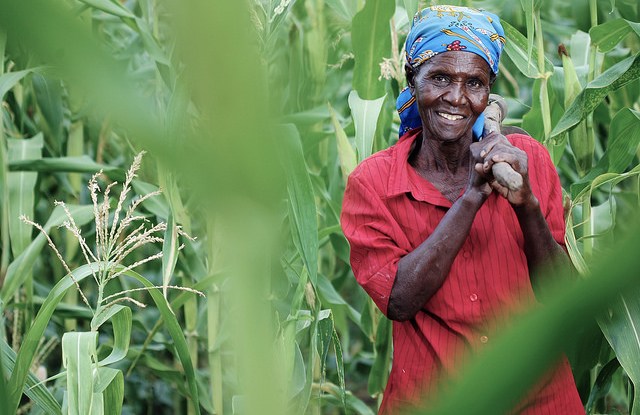To mark the Day’s fourth anniversary, Peter Holmgren, Director General of the Center for International Forestry Research (CIFOR) and Tony Simons, Director General of the World Agroforestry Centre (ICRAF), sit down together in a special three-part video interview series to discuss the challenges and opportunities that lie ahead for forests and for our planet.
In November 2012, the United Nations General Assembly proclaimed 21 March the International Day of Forests. The Day provides an annual platform to raise awareness on the importance of forests and trees and the myriad ways in which they sustain our livelihoods.
Below is a transcript of Part 2 in our special three-part TV interview series. Part 2 discusses the role of the private sector in promoting sustainable land use and supply chains.
A conversation with the Directors General of two CGIAR centers
Part 2: Responsible private investment in forestry and sustainable landscapes
CIFOR and ICRAF are two of the 15 research centers that comprise CGIAR – the only worldwide partnership addressing agricultural research for development whose work contributes to the global effort to tackle poverty, hunger and environmental degradation.
Adinda Hasan, Communications Specialist for Asia, CIFOR
So what’s the role of finance in all of this? How do they help this agenda?
Peter Holmgren, Director-General, CIFOR
Finance and the private sector at large is critical for future development. I think this is central to the sustainable development framework and the sustainable development agenda.
ICRAF has pioneered some engagement with the private sector in your research, so I’d like you to say something about that.
Tony Simons, Director-General, World Agroforestry Center (ICRAF)
If we look at the global economy, agriculture contributes six percent towards GDP and forestry just over one and a half percent. This is a substantial contribution on two thirds of the land’s area.
We face three major objectives. And the first one is to make smallholder agriculture more profitable. Because if we leave smallholders out of the value chains, they will continue to suffer and continue to use a lot of our natural resources and our environment unsustainably. So how do we bring those smallholders into value chains and the marketplace? And that has got to be driving and pulling from the private sector as well.
The examples that Peter referred to are trying to build the trust with the private sector so that they can understand our perspective and our contribution towards working together in a close relationship.
What essentially CIFOR and ICRAF do, is to help identify and manage risks in supply chains. And in doing that, provide technical expertise and a connection through to the livelihoods of those small farmers. And above and beyond just that financial reward, it is the multiple benefits of forests and trees.
Holmgren:
We live in really interesting times because on one side we have the private corporate sector try and achieve more sustainable value chains. This is, of course, driven both by the consumers who demand this, but it’s also fundamentally driven by an interest to do better on the ground.
There’s a lot to do on this. We had the New York Declaration on Forests a year and a half ago where lots of private sector, civil society and some governments and provincial governments committed to end deforestation as part of their value chains. That’s a major political step forward. Now, we’re into the implementation of that.
Simons:
So essentially CIFOR and ICRAF face three challenges in dealing with the private sector.
The first one is the misconceptions that the private sector has about research, about the role of public institutions and public investments. And there is a disconnect here, even though there is so much emphasis on public-private partnerships. And we’re hoping to break down some of that disconnect.
I think the second thing is we need to remember that the small-scale farmer is the private sector. They’re the ones who take decisions, who have to look at how their own livelihoods are benefiting from engaging with the marketplace.
Unfortunately, small-scale farmers often think about cash flow. And so long as the cash is coming in, they don’t look at their profit and loss. And even though they have a positive cash flow, they may end up making a loss. And we’ve got to help bring a lot of those skills in engaging with farmers. And we’re not going to reach them one at a time. It will be through farmers’ groups, cooperatives, associations, interest groups and rural platforms… and that is where engaging at scale with the private sector will really make a difference.
The third one is from the investors’ point of view- both the traditional ODA donors and also new financing instruments because we are research and development organizations, publicly funded, and our role is to generate and validate and produce international public goods. But many people have this mindset that well, if it’s a public good, it must be a private bad. And if it’s a private good, it must be a public bad. And we need to break down some of that to look at how we can better combine public goods with private interests.
Holmgren:
We need also to find ways for the private finance sector to engage. And that’s where the large, very large capital, is available. There are trillions of dollars, literally, in equity in the world looking for good investments for sustainable development. This is a requirement from their stakeholders.
We want you to share Forests News content, which is licensed under Creative Commons Attribution-NonCommercial-ShareAlike 4.0 International (CC BY-NC-SA 4.0). This means you are free to redistribute our material for non-commercial purposes. All we ask is that you give Forests News appropriate credit and link to the original Forests News content, indicate if changes were made, and distribute your contributions under the same Creative Commons license. You must notify Forests News if you repost, reprint or reuse our materials by contacting forestsnews@cifor-icraf.org.

